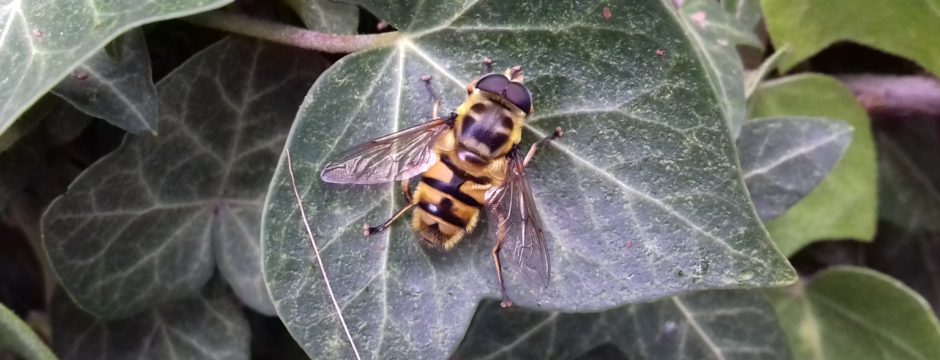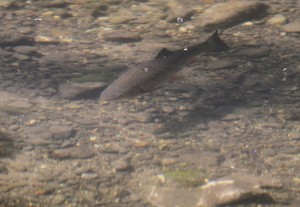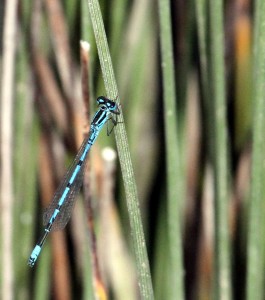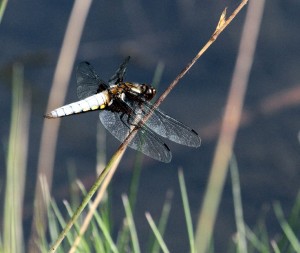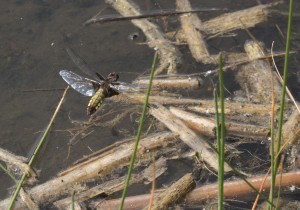Plants, Odonata and fish photographed.
From Bexley Bird Report author, Ralph Todd.
Mid June-Mid July are relatively quiet times for active birdwatchers so I often pursue other avenues of natural history but keep with the flying beasties as much as possible but plants stay still to allow identification.
A slow bike ride from Bexley Village to Foots Cray Meadows turned up some interesting finds. (Click on the photos to look at a larger version).
A small area of ‘orchard’ not far from Bexley village produced a couple of bee orchids, quite difficult to find amongst the long grass, in contrast to the giant hogweed in full bloom at the Albany Park end of Upper College Farm.
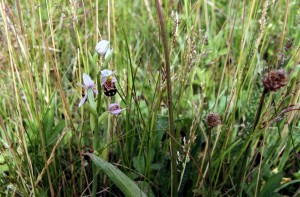
These Bee Orchids occur at one of a handful of sites for the species in the Borough of Bexley. (Photo: Ralph Todd)
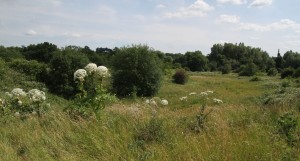
Giant Hogweed on the left. Native Hogweed on the right. They do occasionally hybridise. Pictured at Upper College Farm. (Photo: Ralph Todd).
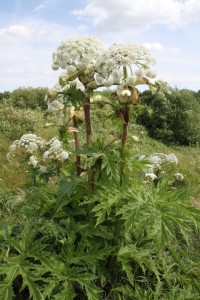
Although it’s a spectacular plant, the invasive South American Giant Hogweed is an unwelcome sight at several locations along the Cray valley, and is seen here at Upper College Farm. (Photo: Ralph Todd)
The River Cray in Foots Cray Meadows produced lots of Chubb and dozens of banded demoiselle (damselflies).
The undisturbed ponds are a haven for dragonflies and damselflies of which, blue-tailed, azure and common blue damselflies and broad bodied chaser dragonflies were the most numerous. An Emperor was also present but too quick in flight for photographs.
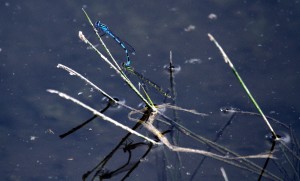
A tandem pair of Common Blue Damselflies at Footscray Meadows. Note the black ‘club’ on the front part of the abdomen in the blue male, which aids identification when compared with the Azure Blue. (Photo: Ralph Todd)
